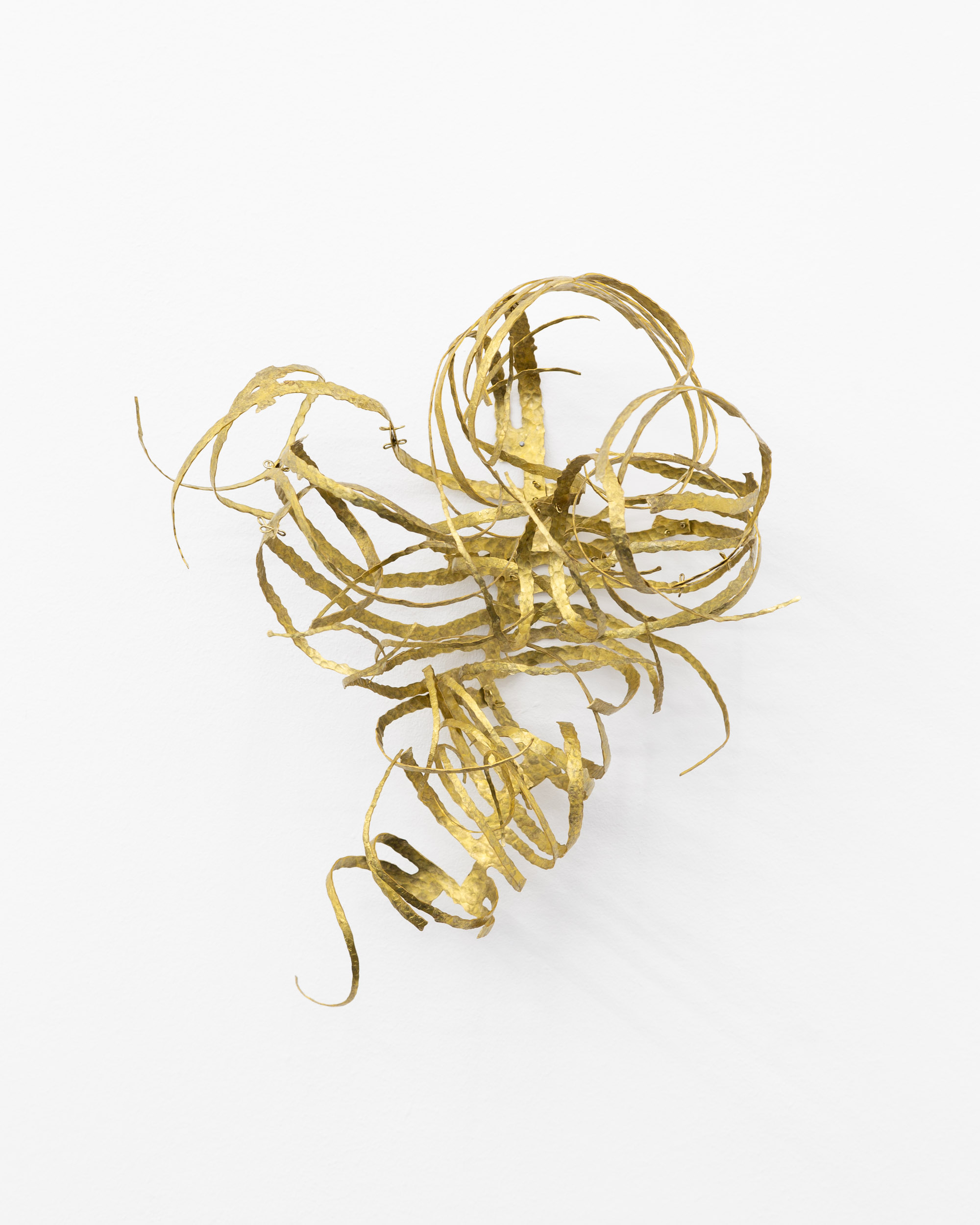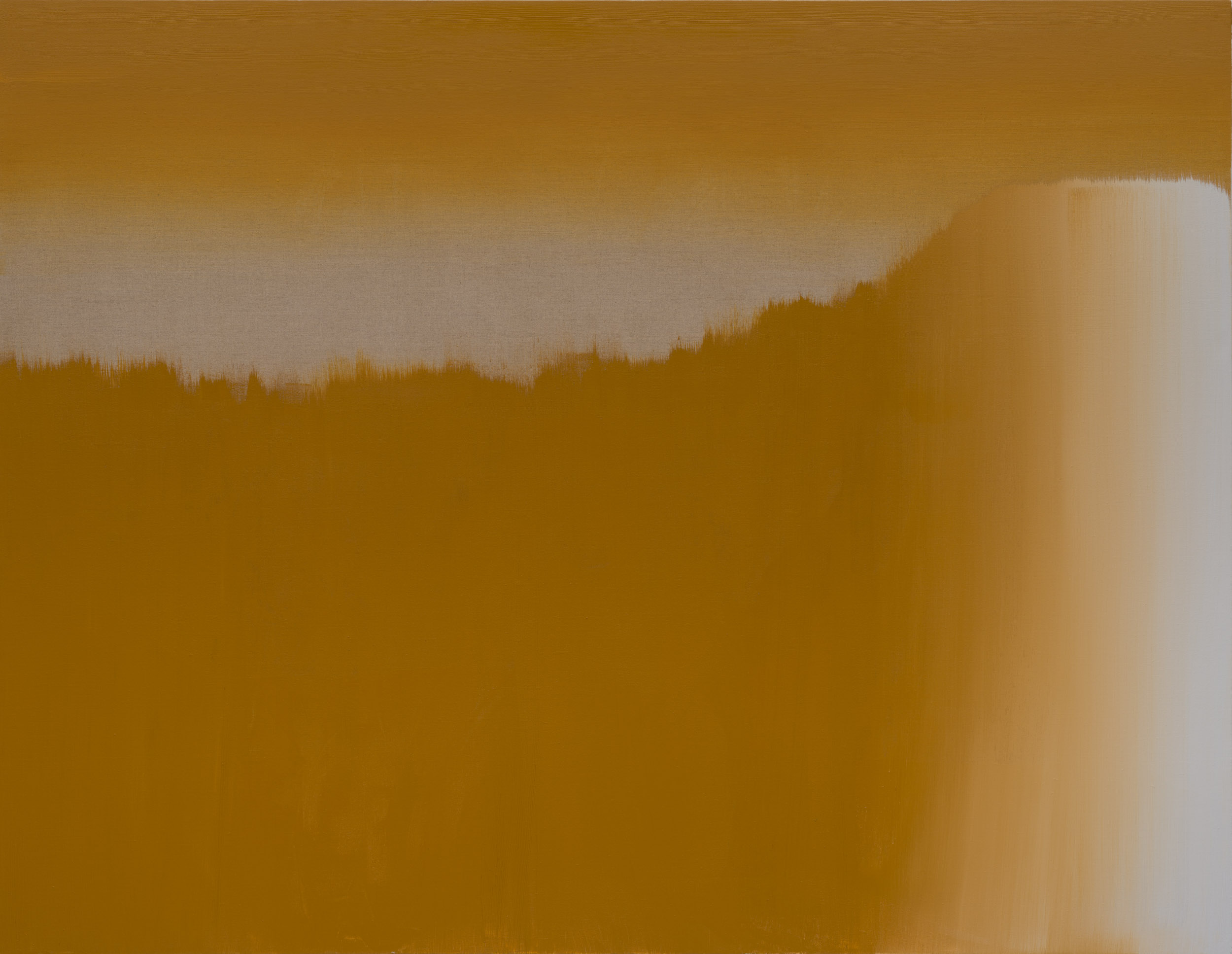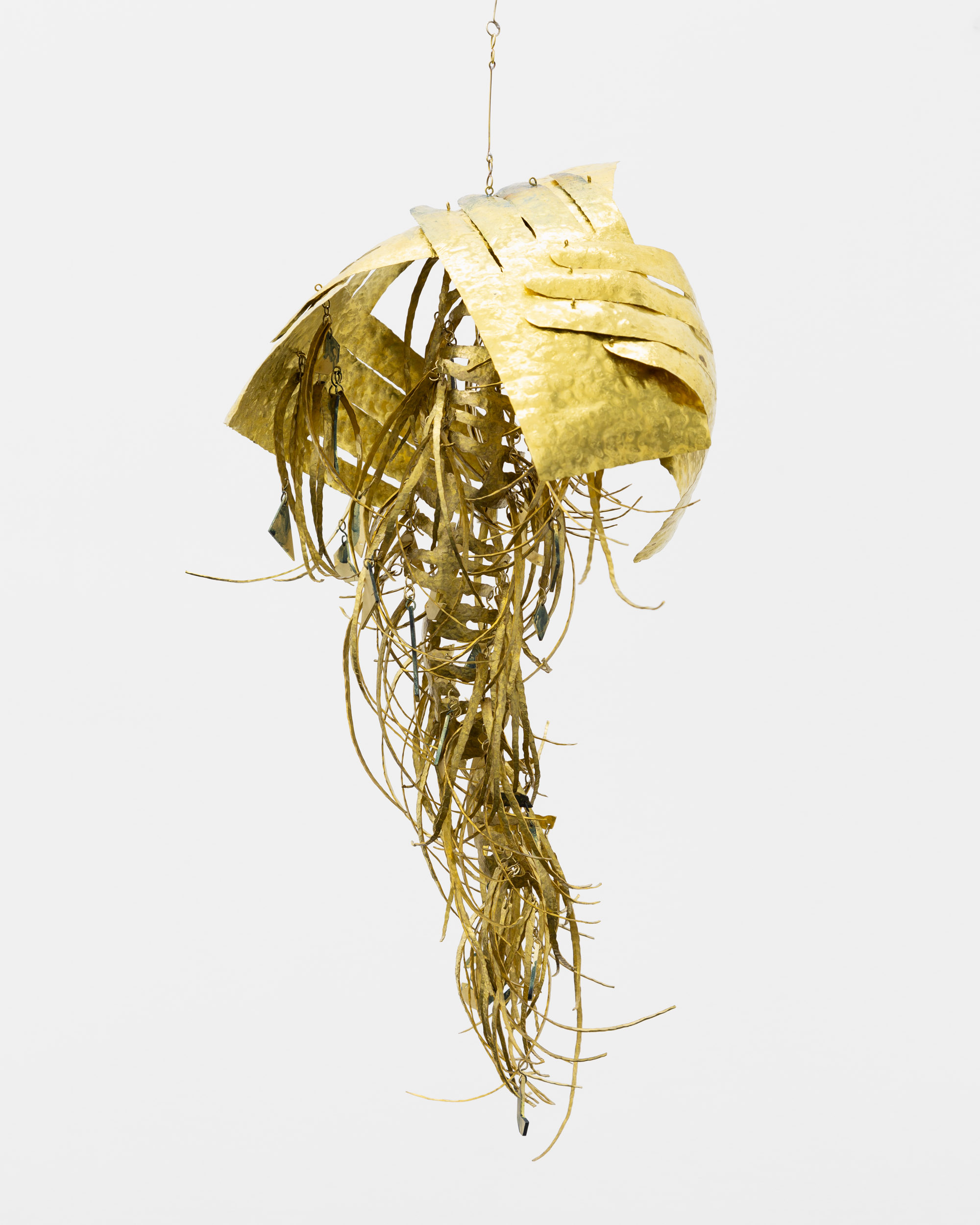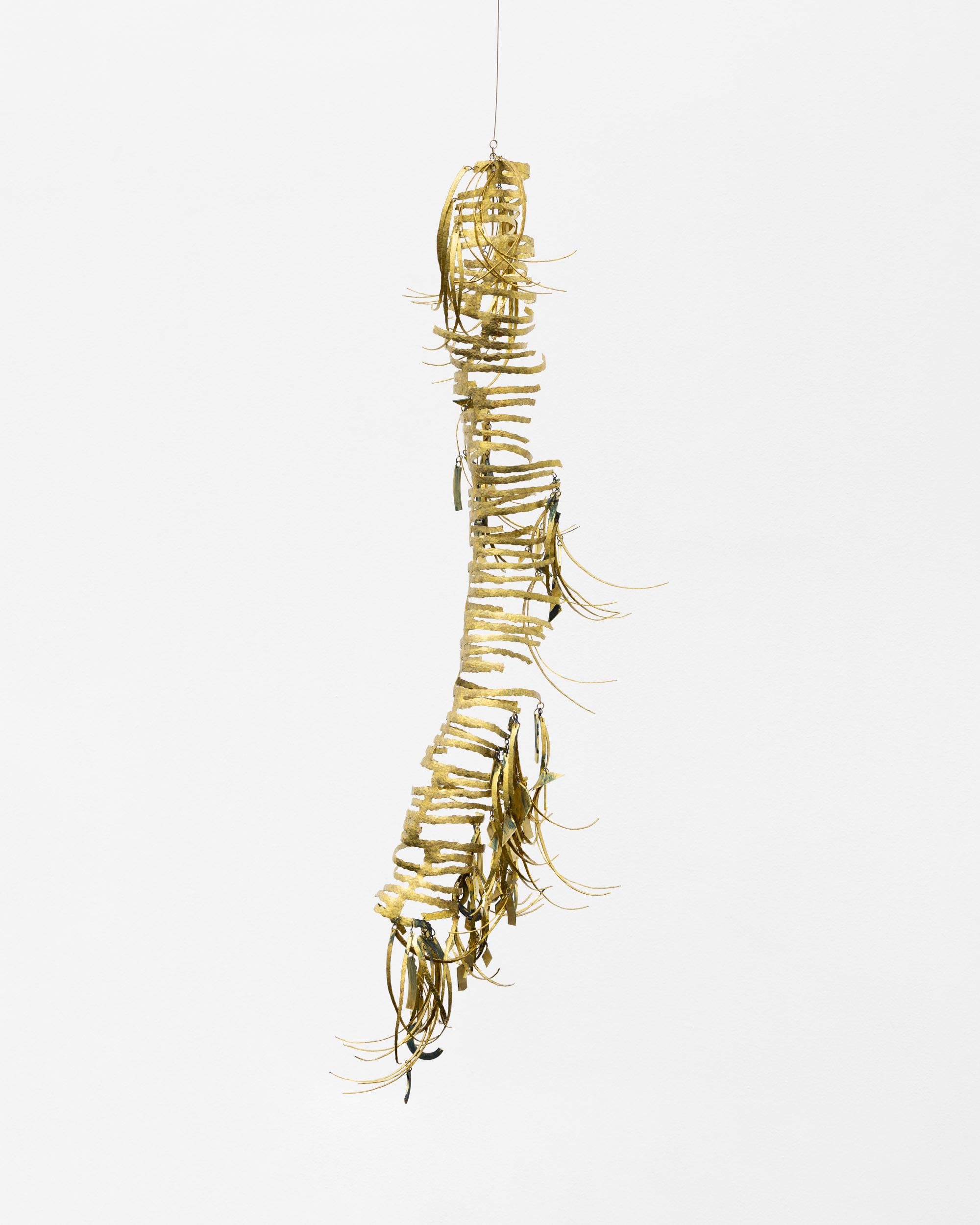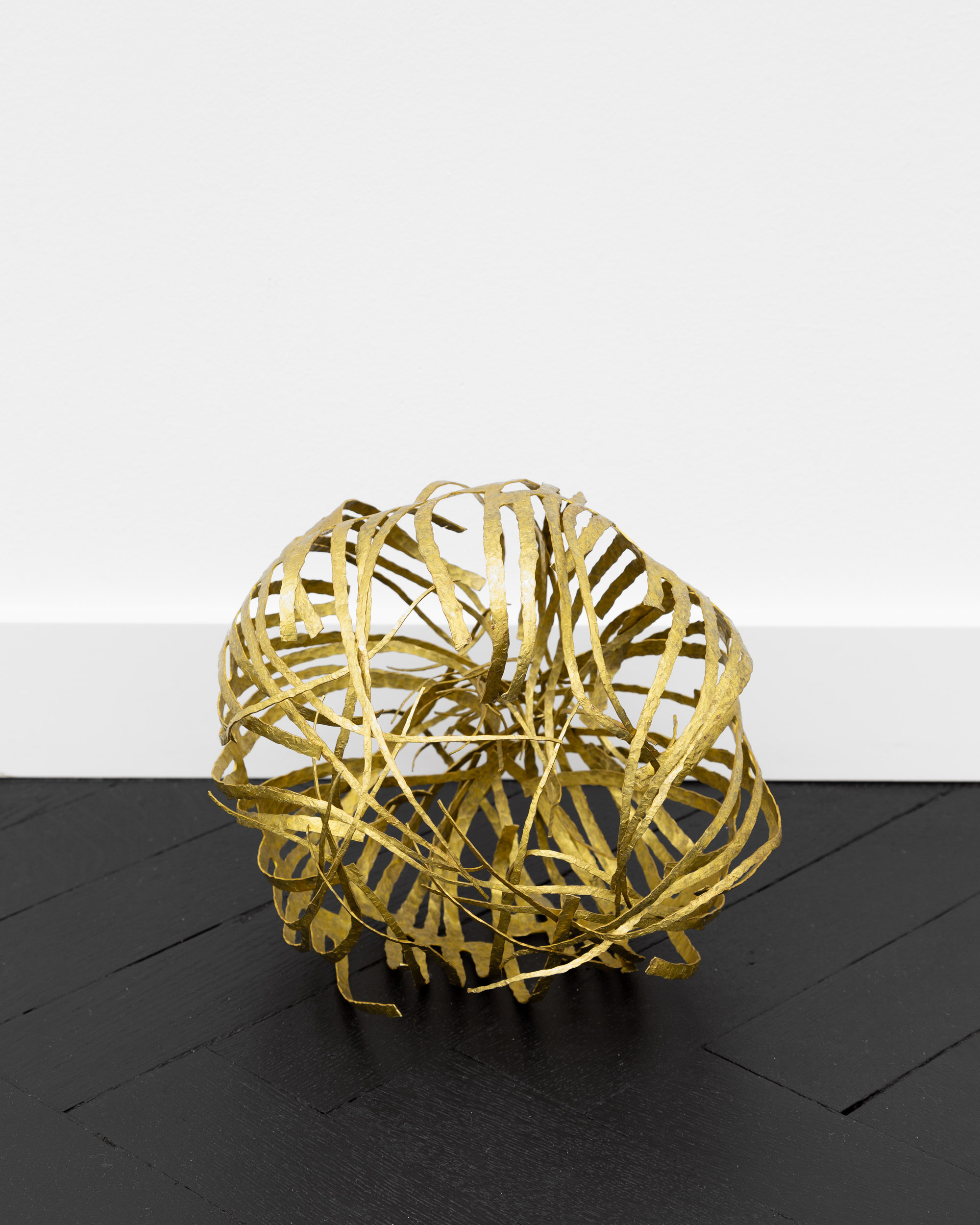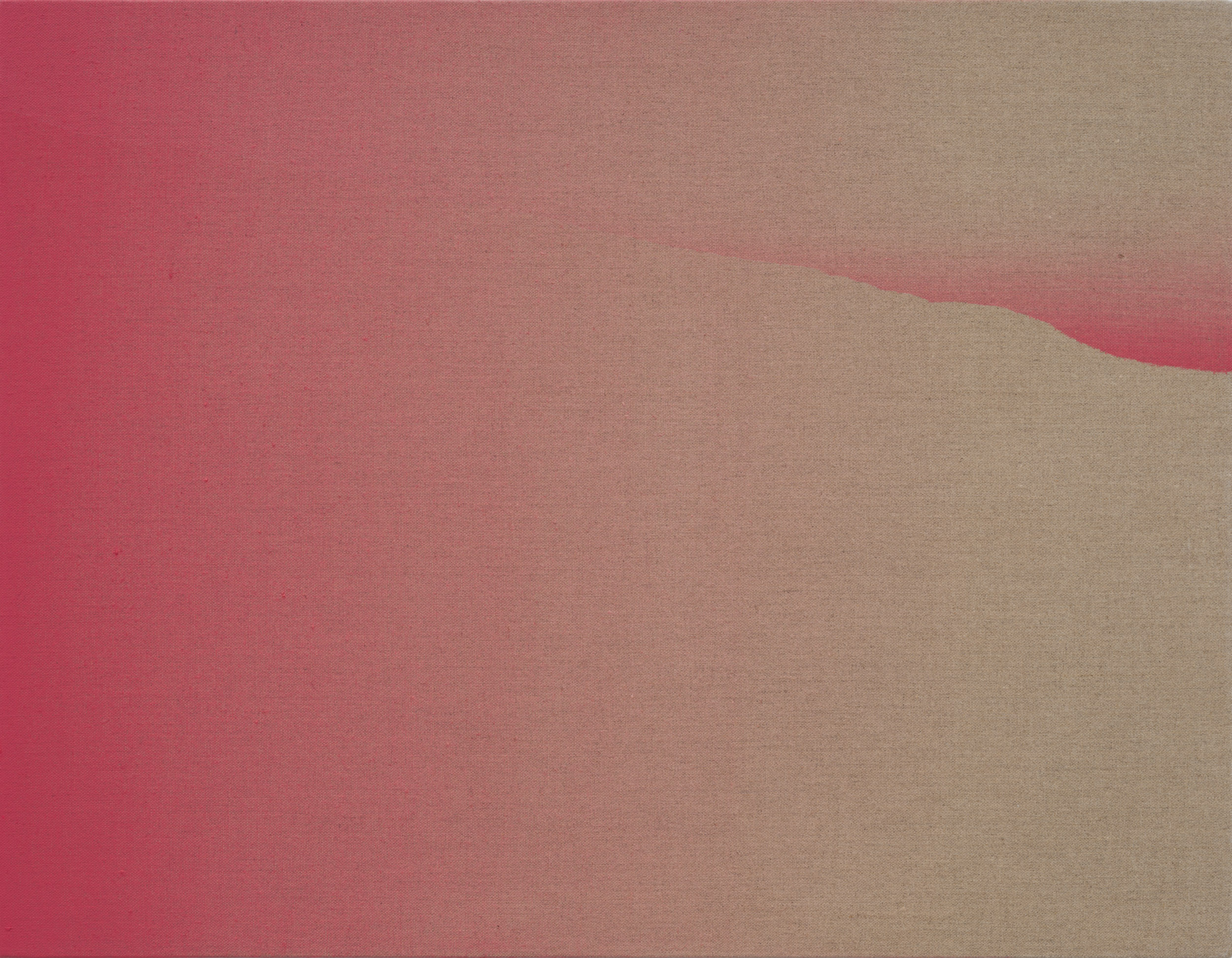Agata Bogacka,
Iza Tarasewicz
Stories of Lasting
Dec 2, 2023 – Feb 10, 2024
Opening:
Saturday, Dec 2
5 – 7 pm
Gunia Nowik Gallery
Bracka 18/62, Warsaw, Poland
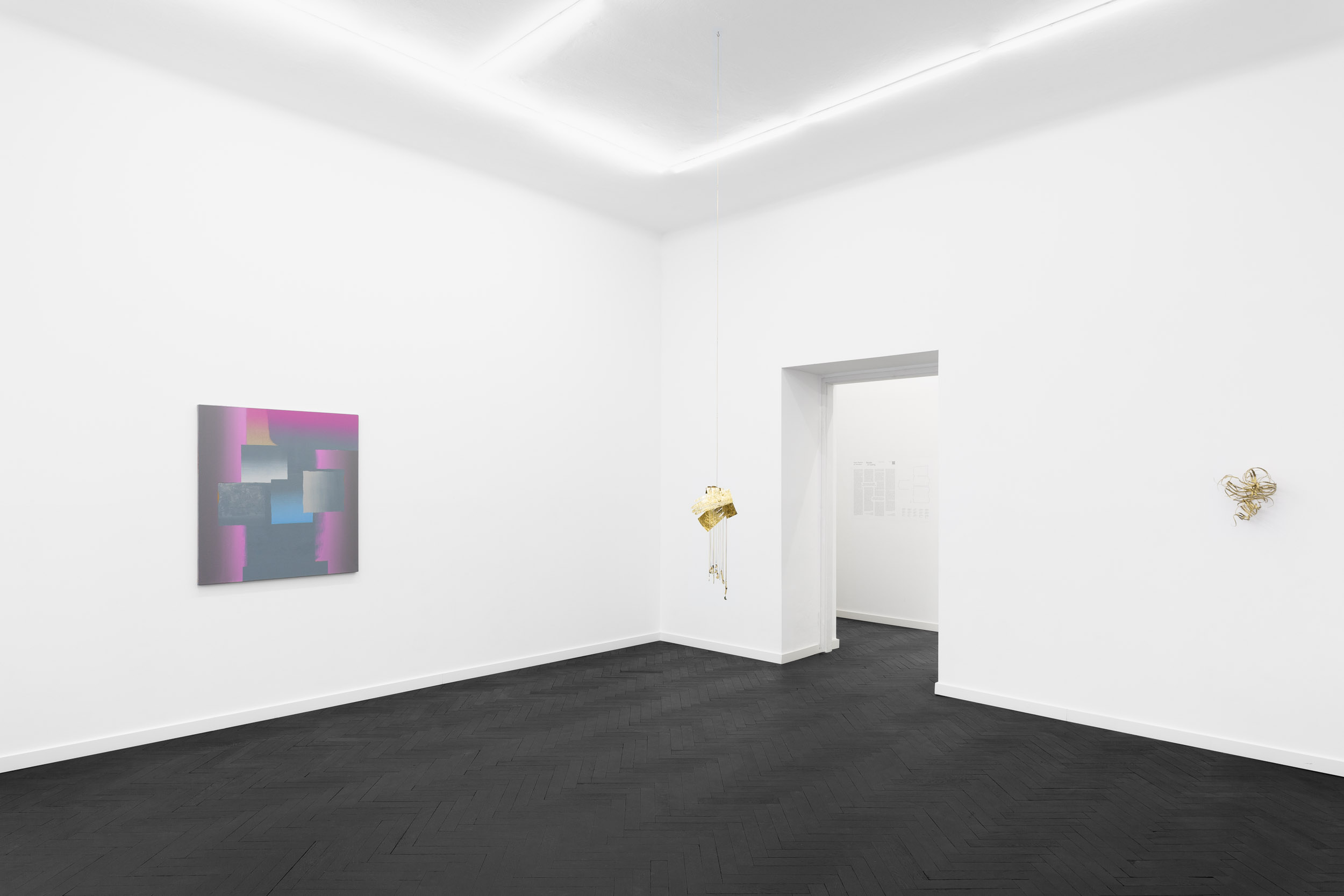
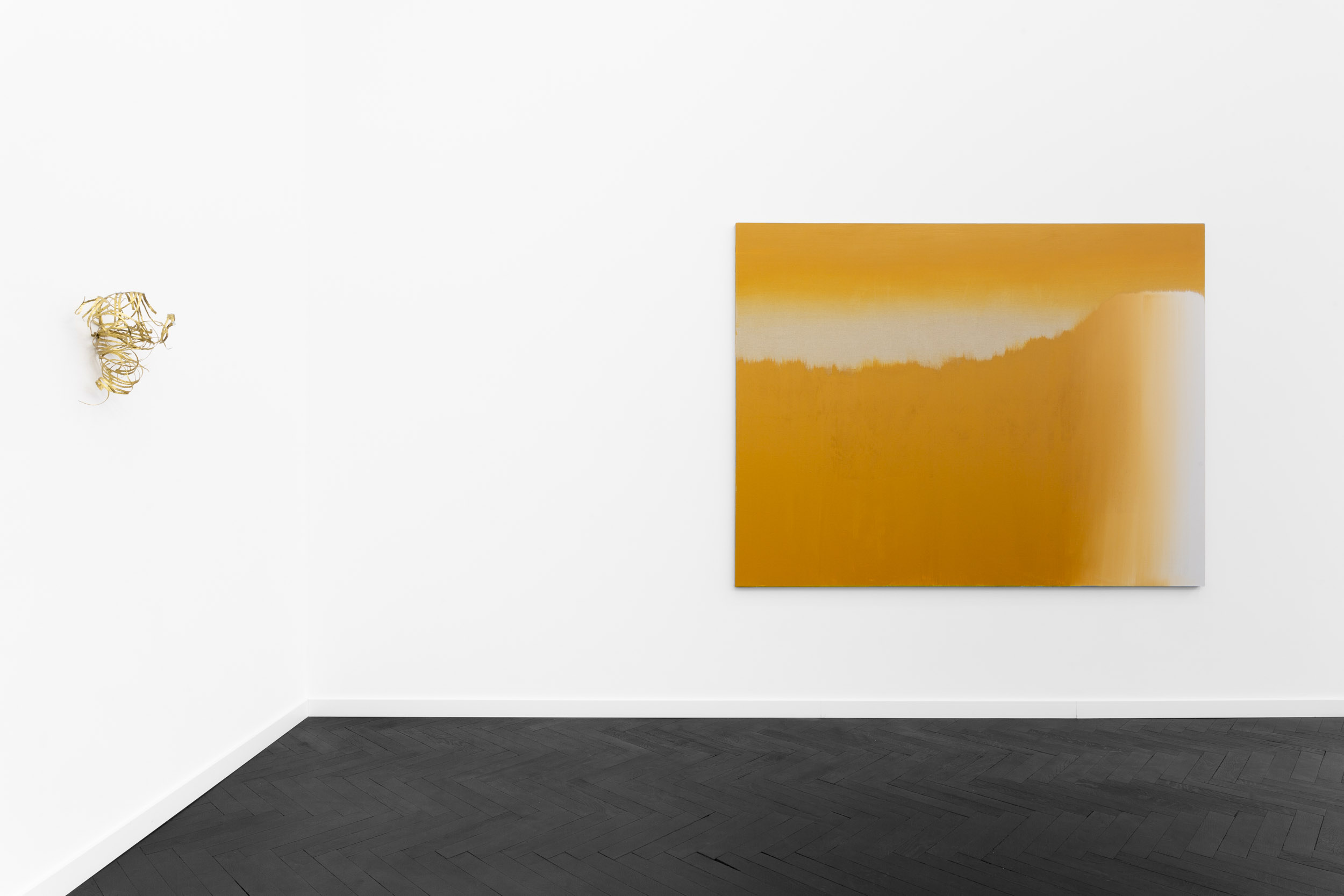

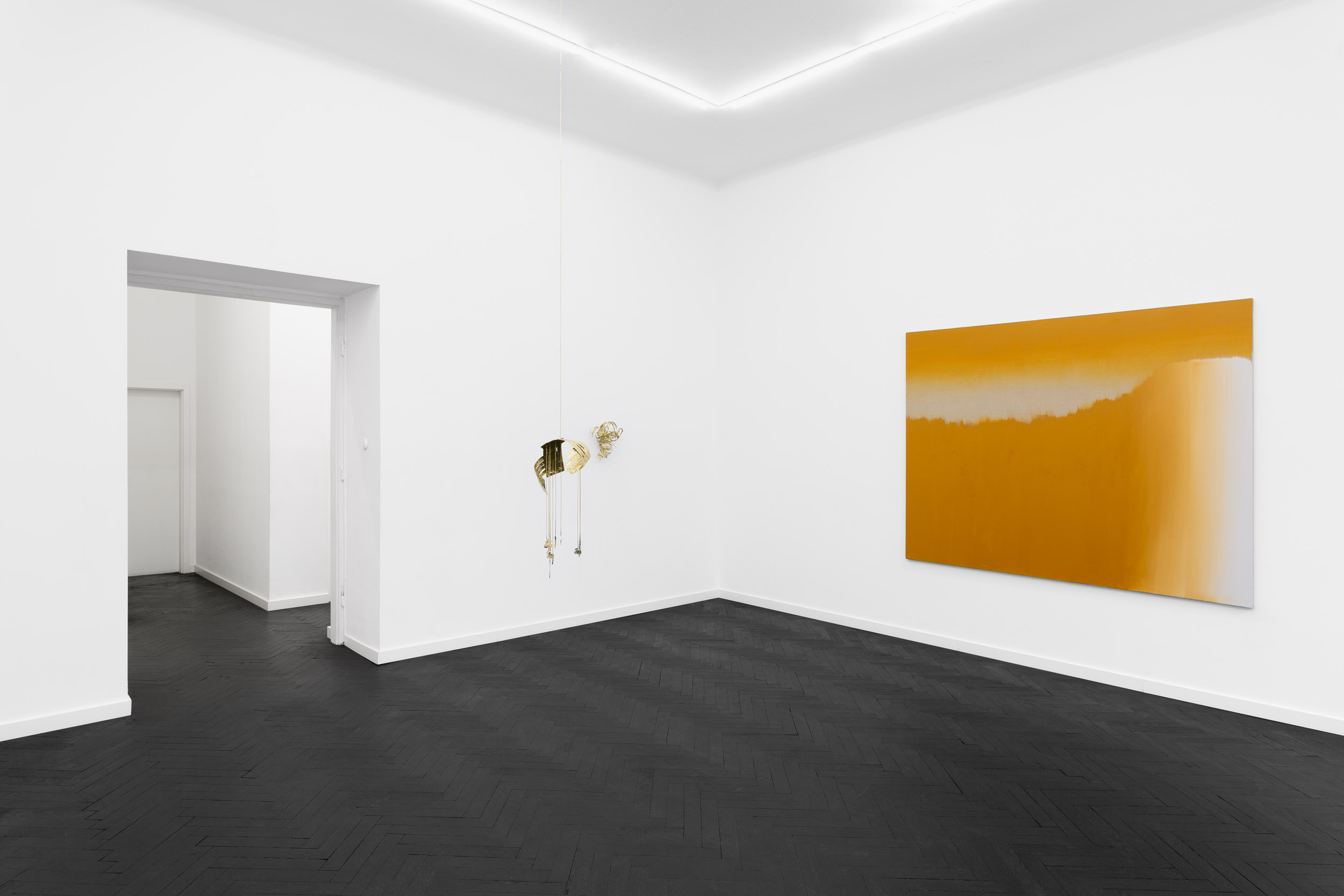
An intuitive process initiates these stories of lasting.
Over the works hover far-reaching questions about endurance and relational issues. Are there any ways to feel safe and protected in this world?
Bogacka and Tarasewicz both work with an almost frightening artistic honesty. They create stories about both the most private fears and trepidations (both hidden and exposed) and stories about the greatness that is the world outside ourselves and the complications of being a human being.
They work with the same questions, but with completely different materials. The works talk to each other with different dialects. The dialogue makes us look even more closely, and we witness this encounter in the gallery rooms, almost like we are eavesdropping.
Bogacka's paintings bear titles that can be read as subtitles to a film made with a visual language you cannot fully grasp. Tarasewicz's objects appear to be involved in an ongoing discussion or negotiation with both themselves and the space they reside in. There is something incredibly tender in their works, there is a sensitivity and a very concrete notion in both artist’s realms: the physical labor of giving shape to brass and the thin layers of paint exquisitely applied to the raw canvas.
Bogacka's paintings exists somewhere between dawn and dusk, which of course is also where humanity seems to reside. After enlightenment there is always a new darkness. But I want to believe that there can be some light again. The minimalist painterly gesture gives meaning to the emptiness of the raw canvas, asking the question: do we last through action or surrender? Is the paint applied or peeled off, is the canvas a void or solid ground? Bogacka’s painterly mountain ridges have a sensuality, like stroking the person you love along their spine, tracing a soft line.
Georgia O'Keeffe once wrote about her surroundings in the desert on a summer day in a letter: It was just big and still – so very big and still and these words come to me when I look at Bogacka's paintings. Bogacka paints layers on and against each other and in the series Disagreement she plays with a painterly polemic where it is actually an illusory power struggle as the layers are almost transparent, like a fog covering the canvas. The light and the dark, what lies below and above dissolves. But there is a Weltschmerz. These are not ideal landscapes, but they are landscapes that do not lie. They are filled with everything. Energies, love, hate, bad news, good news, and disasters, all of which are channelled through the artist’s soul, hand, and paintbrush onto the raw canvas. The swarms of color are applied so beautifully, but also present in the paintings is a desperate cry. In some of Bogacka’s paintings there is seemingly a light ascending from behind a line, the borders in the work melting away slightly. The painterly gradations are so subtle, one must look closely and follow the movements as if we were retracing Bogacka’s steps. A subdued fury is mixed in with the color pigments in her paintings.
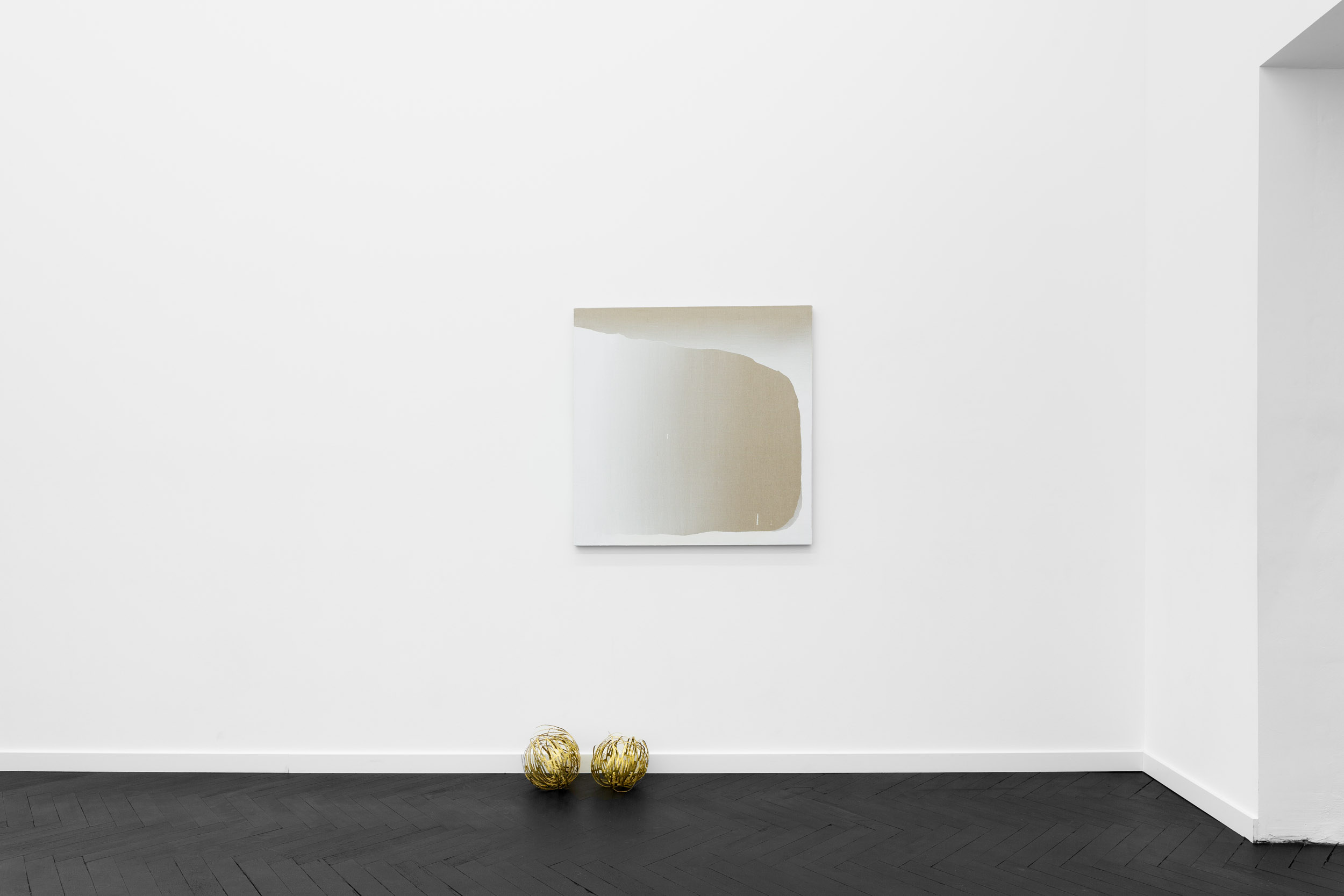
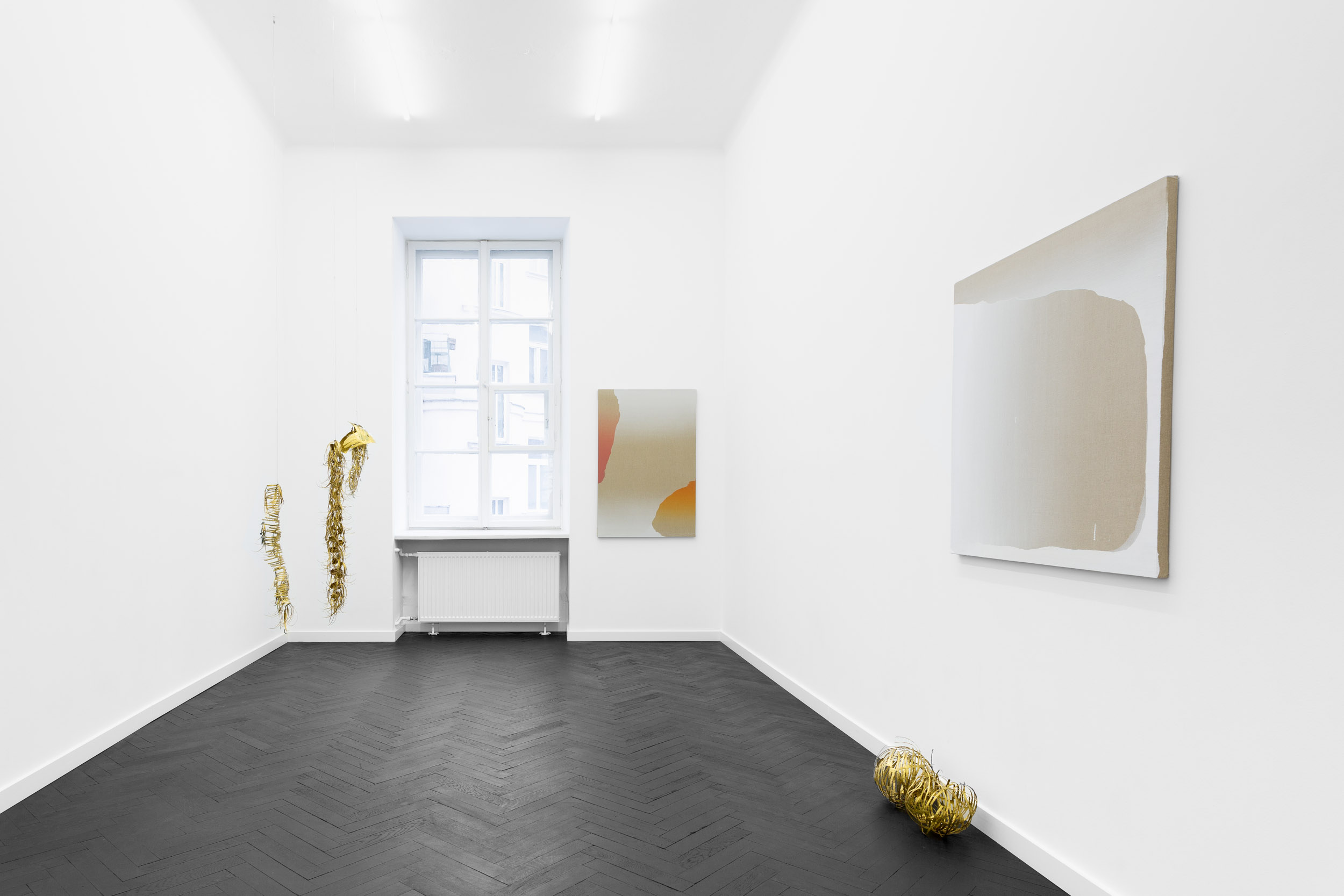
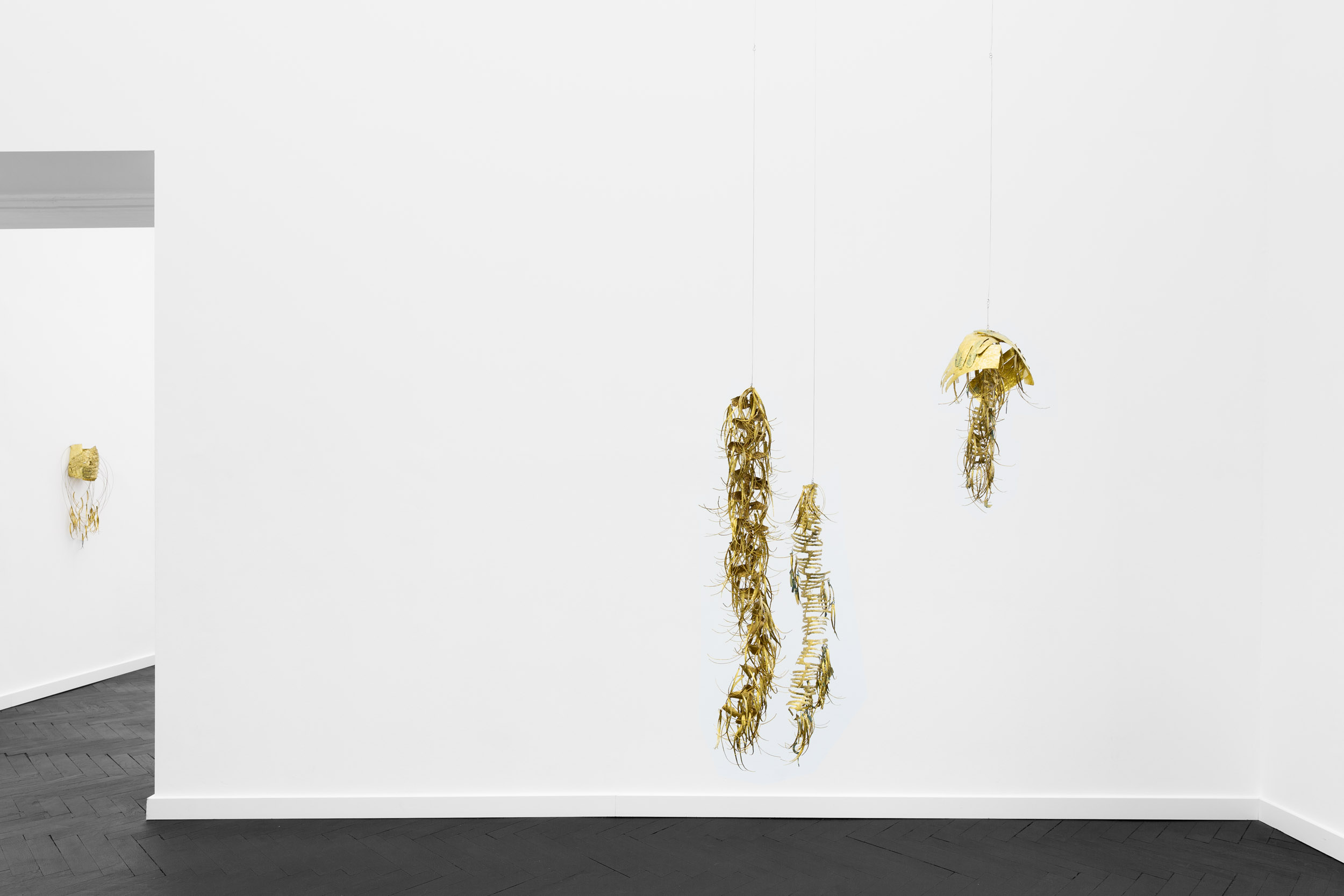

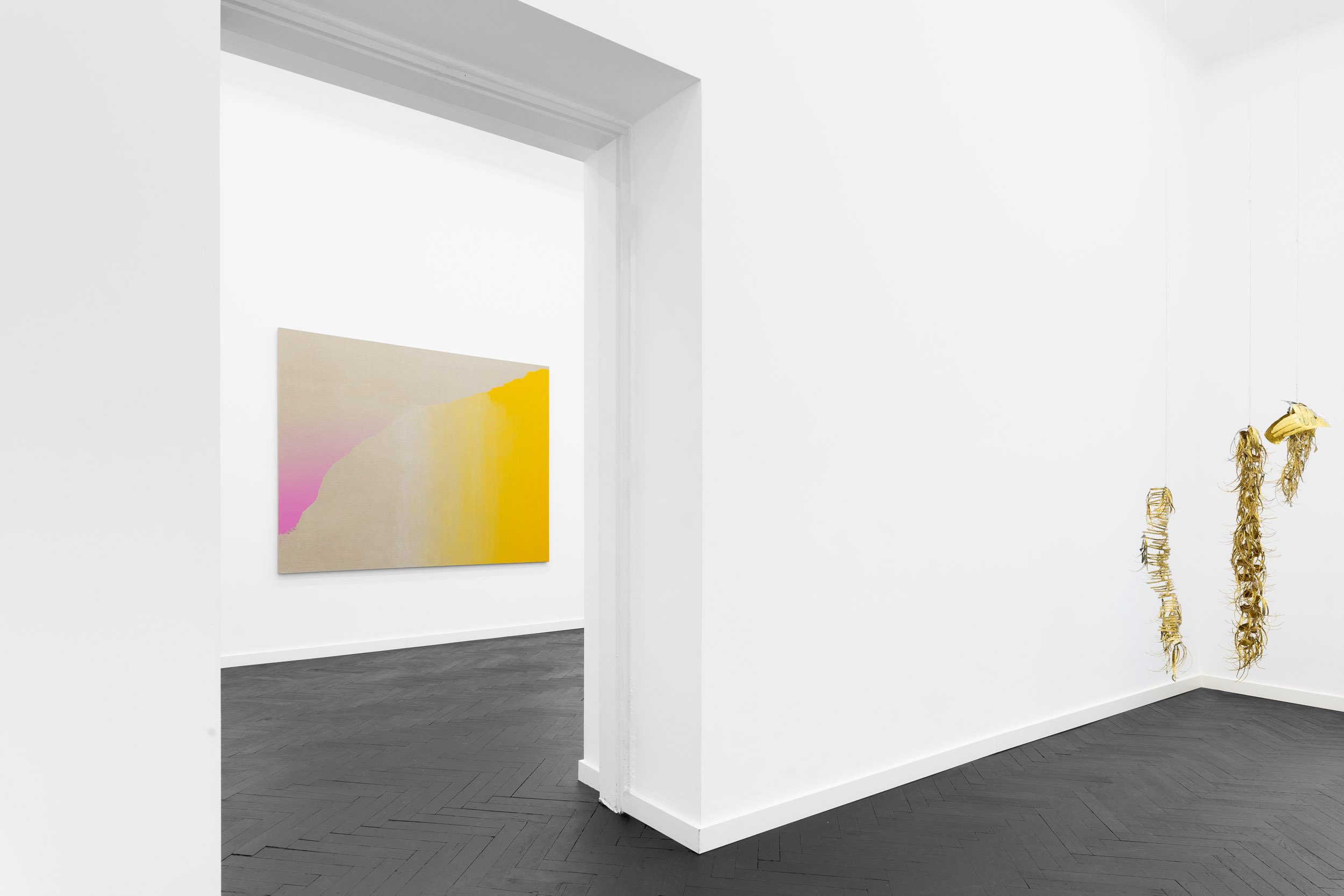

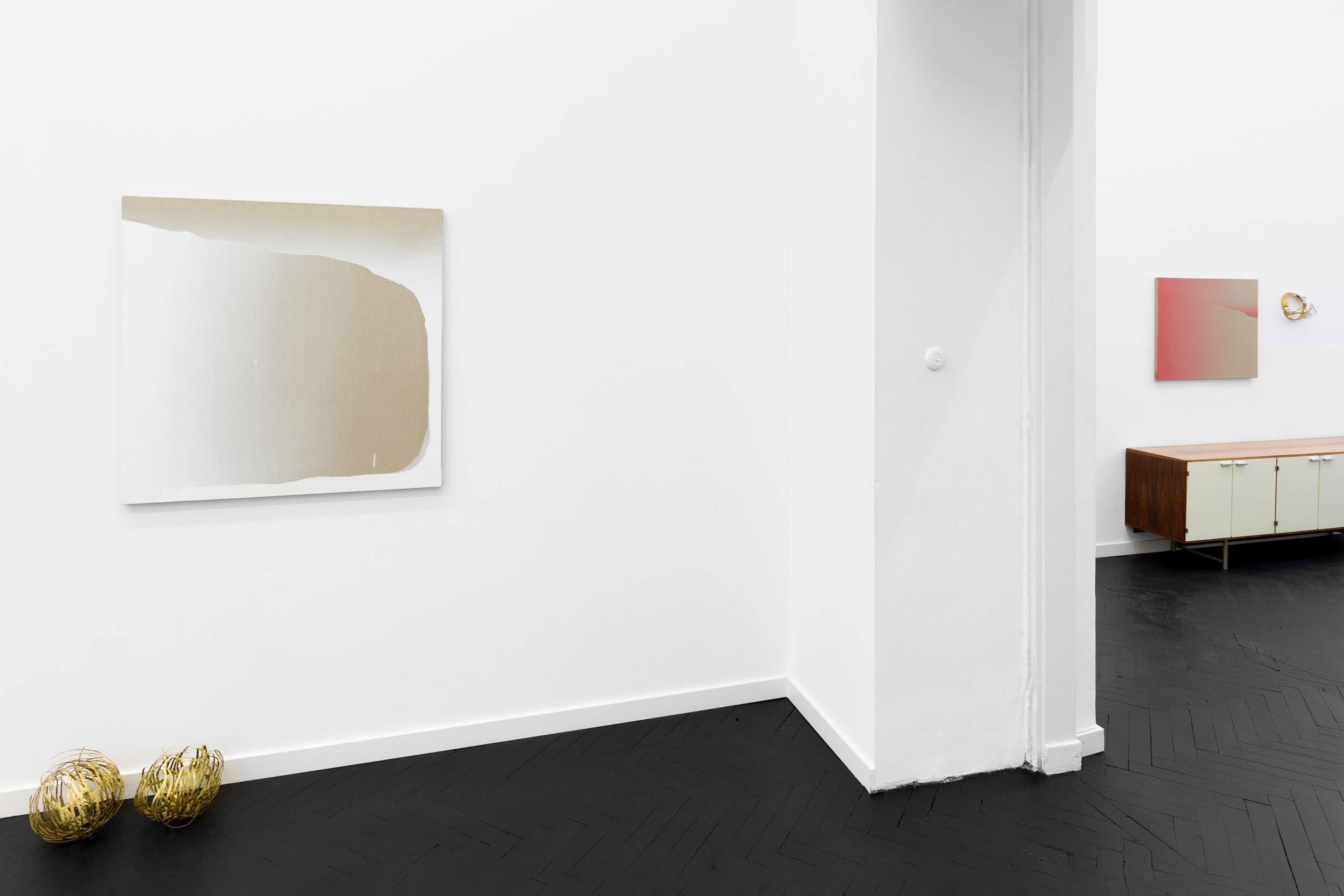

The corporeal is also present in Tarasewicz's brass sculptures, both in the hands and in the way the mobiles can be compared to long strands of proteins or skeleton fragments. The works also resemble absurdist jewelry. There are thumbless hands that embrace and protect. But the lack of thumbs also confirms a want, how we so often cannot hold on, how we struggle to grasp reality. We let so much just fall down, down. The hands are also an allusion to the very beginning of art. The many cave paintings done by early humans – spraying pigment on their hands, making a mark with their own hand as a template, leaving behind something of themselves. The sense of something primal in Tarasewicz's art is consoling, we are all in it together, art and science, then and now, all of it forms a strange unbroken chain. The hand itself is both comforting and threatening, a stroke can be both violent and/or affectionate. The objects have to do with communication and the new works are smaller in scale meaning we can stand in front of them on a more equal footing. They are us and we are them.
The objects consist of parts which are repurposed in many aspects, both from being innocent raw, untreated metal and from previous experiments in the studio, now transformed into something new. The works consist of things broken, some being sharp objects that need to be protected, and some that we might need to be protected from. This is a key to Tarasewicz's works: the two perspectives at play, the object in its own right and that same object’s relationship with us, with the world. And how this relationship is organized. There is something otherworldly in the objects, they look as if they could be a part of a long-forgotten ritual.
The works in Stories of Lasting are defiant and they also have something dazzling about them, an exclusivity in the execution and aesthetics. We are dealing with beautiful art that describes phenomena and issues that are not always beautiful. Though there is beauty in both chaos and order. There is so much to fear and yet we need to hold on, we need to endure. The world is banal and scary, but it is all we have.
So, we must find comfort in art and sometimes in corny pop song lyrics from 1967. But this doesn’t mean we shouldn’t be angry. There must be both anger, protests, and splendor. And sometimes we might even strive to be a lasting part of everlasting love.
Open up your eyes, then you'll realize
Here I stand with my everlasting love
Need you by my side, there's no need to hide
Never be denied, everlasting love
From the very start, open up your heart
Be a lasting part of everlasting love
Sara Walker
Curator and director at The Swedish Association for Art (Sveriges Allmänna Konstförening)

